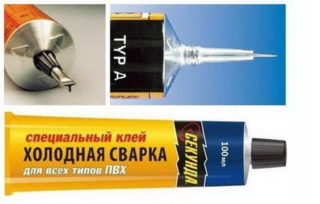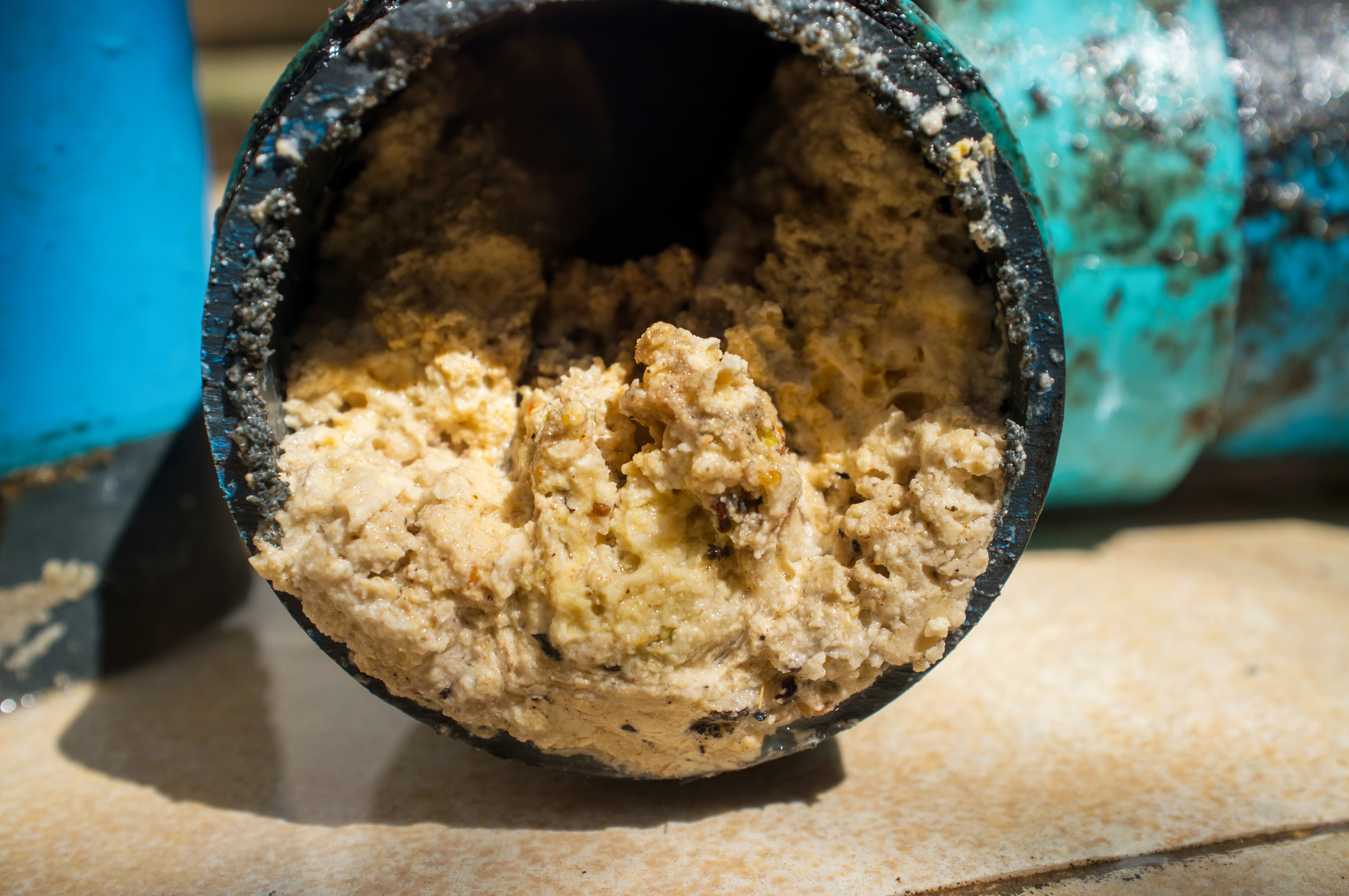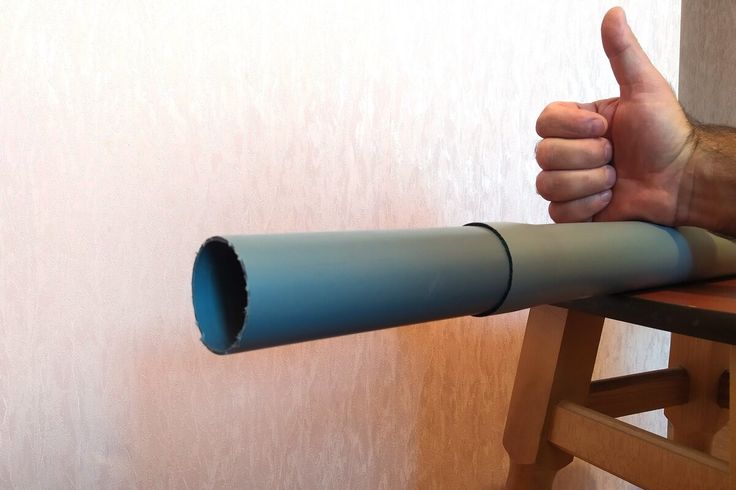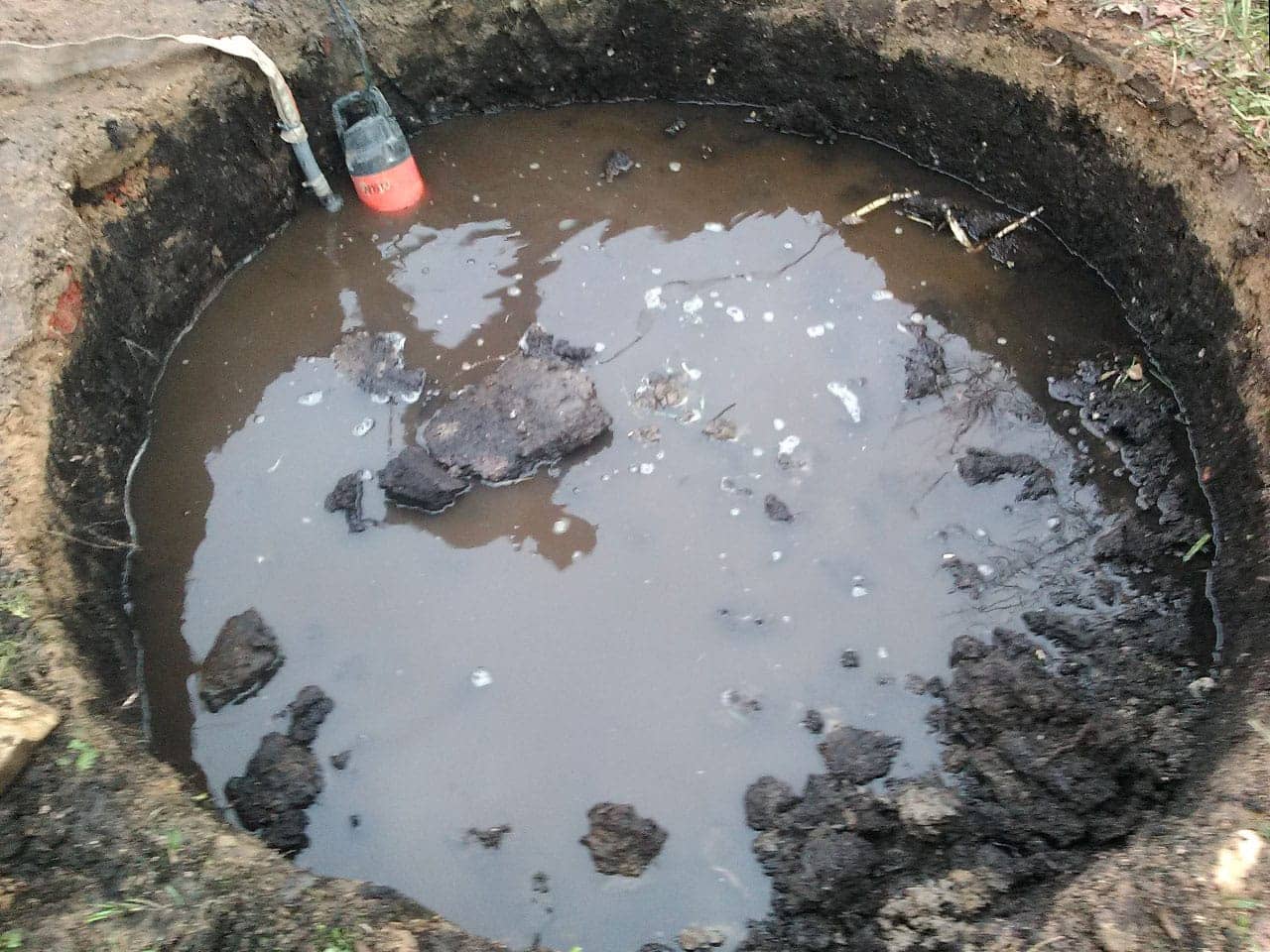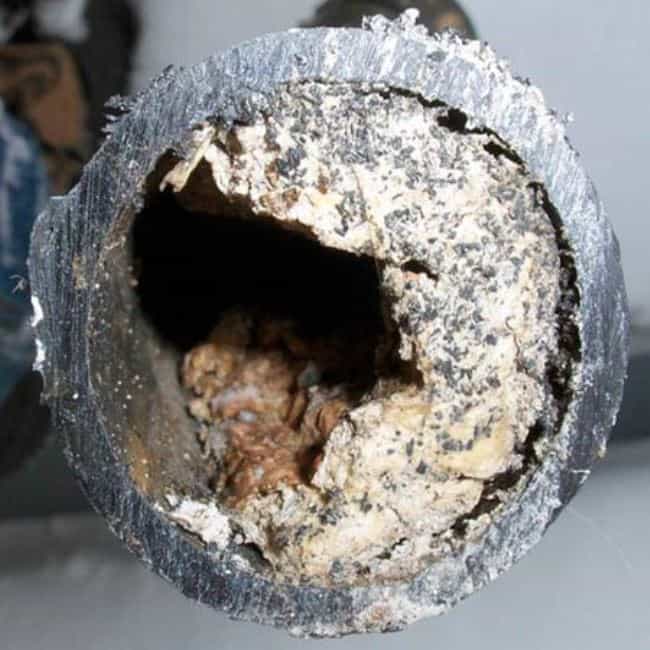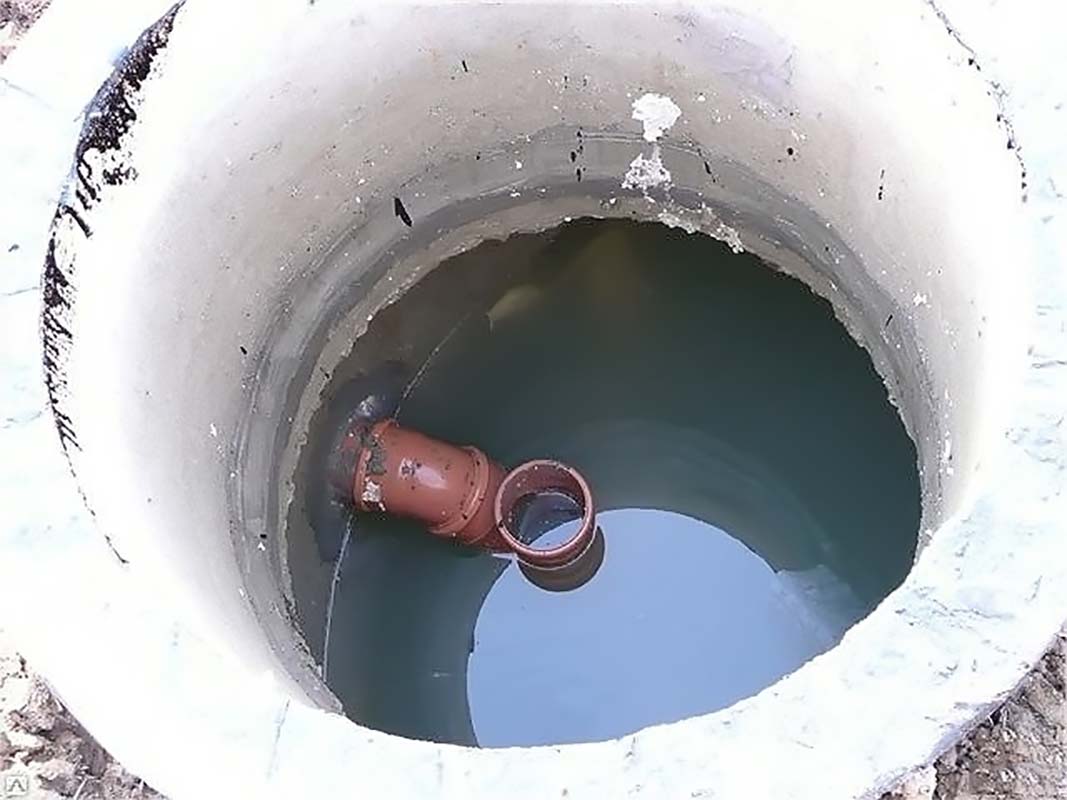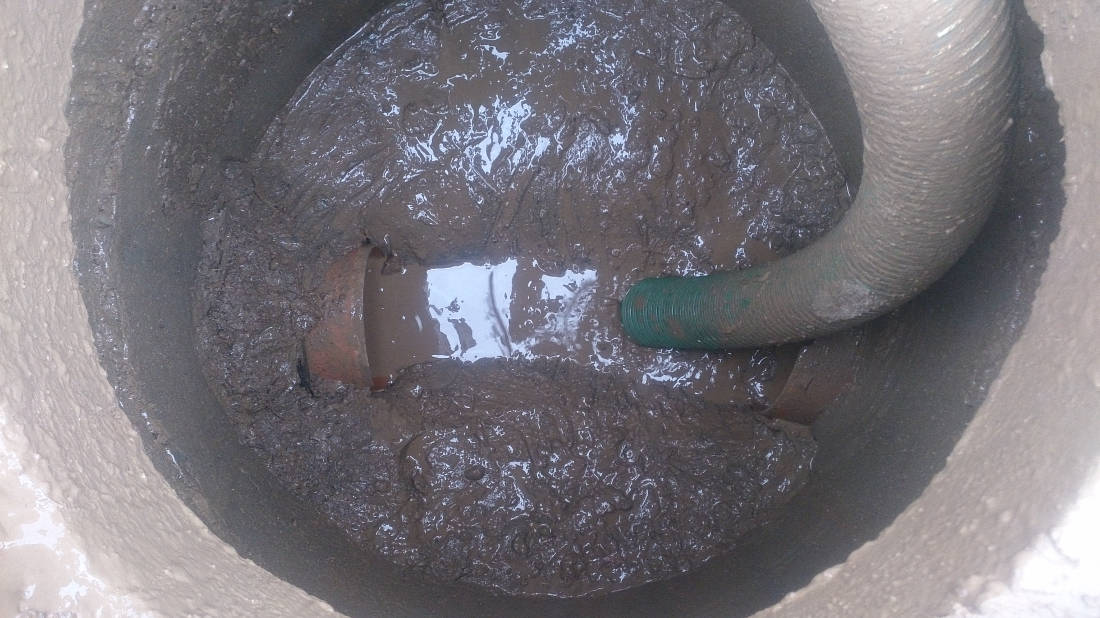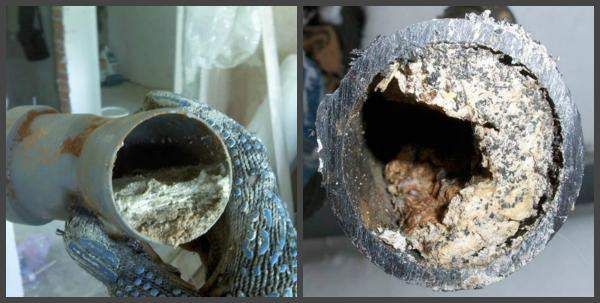Modern technologies for joining pipe sections using adhesives allow you to create the most sealed pipeline. Communications are strong and durable. Ease of installation makes it accessible even to a non-professional.
Types of glue and principle of operation
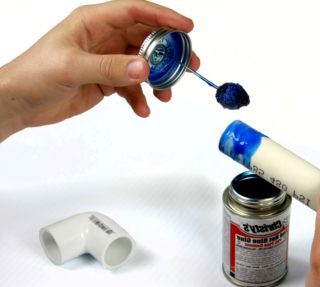
For gluing pipes, a composition based on a polyvinyl chloride solution with additional shrinking additives is used to improve adhesion. The principle of operation is simple: when applied, the glue begins to harden due to the evaporation of the solvent. Molecular PVC particles bind to each other, forming a strong connection, similar to the pipe wall. For strength and tightness, this method is called "cold welding" - the effect is no worse.
There are compounds that are used by preheating the ends of pipe sections. The label must indicate that the product is used for hot gluing.
Purely "cold welding" is carried out with other compositions. They can be versatile and specialized. The latter are used exclusively for the installation of sewer pipes and water supply. Universal adhesives are used to glue any polymer parts, even to solder linoleum pieces.
Adhesives are also classified into two types. It depends on the density of the plastic product:
- for soft bases - water supply and drainage pipelines;
- for solid - siphons, fitting connections.
Regardless of the degree of hardness of the material, a suitable adhesive is immune to prolonged contact with water at different temperatures.
The advantages of the technique
- Reduced risk of leakage due to molecular bonding. Minimum labor costs.
- Fast and inexpensive assembly. The whole process can be done by yourself. All you need is to buy materials and choose the right glue.
- Versatility. You can glue plastic pipes for sewerage or water supply of any section - from 6 to 400 mm.
- Use for renovation work. In this way, they not only connect the pipe sections, but also glue the damaged areas on the pipeline.
Cold welding is an inexpensive and practical method of assembling sewer pipes. To use it, there is no need for the cost of additional connection parts or specialized equipment.
Adhesive bonding of plastic products is used quite often. It provides a greater leak-tightness of the pipeline in comparison with O-ring flares.
Criterias of choice
When choosing an adhesive composition, be sure to study the instructions for use and take into account the characteristics of the material. The following indicators are critical:
- Bonding time. For cold joining, approximately four minutes.
- Water pressure. The higher this indicator, the more reliable and more expensive the adhesive composition.
- Features of loads. Pipelines can move under external mechanical stress or due to internal pressure. In order for them to maintain their integrity under displacement loads at the junction, it is necessary to choose a more reliable adhesive.
- Method of use and storage conditions of the adhesive. If these indicators are not met, the quality of the glue will decrease.
It is necessary to take into account the installation site of the highway.Operating conditions in different places can differ significantly in terms of pollution level, air or water temperature in communications and other important indicators. Adhesives are selected individually for different zones.
Stages of connection works
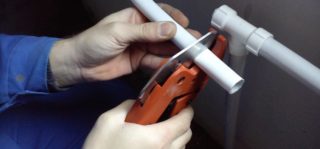
Cold assembly of polymer lines is usually performed using the socket method. To increase the reliability of the joint, the surface of the narrow section of the pipe section is given a slight roughness - already at the factory or at home using sandpaper. The cleanliness of the "welded" surfaces is also important. If they are dirty, the bond strength will be significantly reduced.
Preparatory work
The assembly is carried out in a dry room at a temperature of 5 to 35 degrees Celsius.
Preparatory work with pipe sections includes four stages:
- Use a pipe cutter to make smooth, rough-cut parts. If not, then use a metal hacksaw with fine teeth, and then sand the edge with sandpaper. This must be done as burrs will prevent a leak-tight connection.
- Fit the entire fitting tubing without glue and mark all the “fusion” areas and the installation depth of the pipe sections with a marker. Disassemble the structure.
- Degrease the marked areas with a cleaning agent, preferably the same brand as the glue. The inner end of the pipe can be lightly sanded to improve adhesion.
Before glueing the crack on the plastic water pipe, the surrounding area must also be cleaned and degreased.
Bonding technology
Stages of joining pipe sections during cold installation:
- Stir the adhesive thoroughly before applying to the surface.
- Take a brush and apply it evenly and thinly to the flares of the fitting connections and then to the pipe. Apply the adhesive along the pipe, not across it.
- Insert the pipe piece as far as it will go into the socket, referring to the marks made during preparation. When connected, elements cannot be swung and scrolled.
- Hold the joined parts firmly for 15 seconds to give the compound time to set.
- Use a paper towel to remove any excess adhesive that has come out at the edges.
Adhesive compositions are caustic, flammable substances, so they must be stored in a place protected from fire, inaccessible to children. Do not smoke during cold welding. Wear protective gloves to prevent glue from getting on your skin.
Possible mistakes
If the adhesive is applied unevenly or the surfaces of the parts are uneven, the tightness of the joint will be broken. It will also leak when the adhesive layers dry out. After the adhesive has been applied, about two minutes remain for high-quality joining of the sewer elements. After that, the glue will dry.
The appearance of a soft layer of adhesive is possible due to the low temperature in the room, or if little time was allotted for the solidification of the substance. In this situation, the evaporation of the solvent included in the adhesive composition did not occur completely.
Air ingress during spreading or insufficiently thorough mixing of the adhesive composition is the reason for the formation of a porous and fragile adhesive layer.
The skew in the joint is due to insufficient fixation of the elements to be joined, as well as their shift during the setting of the adhesive composition.
Cold welding allows you to install high-quality and durable plumbing and sewerage systems. The method is used to create communication highways in a private and multi-storey building.

